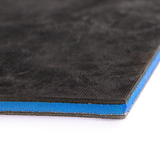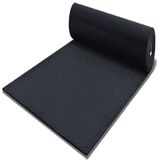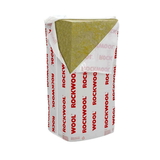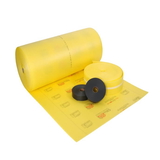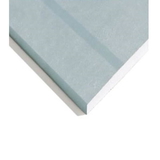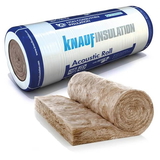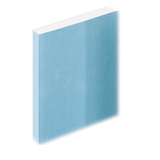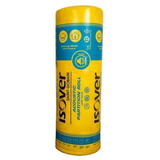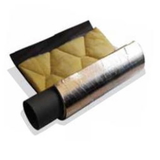- Blogs
- Different Types of Soundproof Insulation
Different Types of Soundproof Insulation

If you’re interested in installing soundproof insulation in your home, there are several different types of soundproofing options available. These include Acoustic foam, Acoustic panels, and Acoustic walls. Keep reading to learn about the different types of soundproof insulation and what each is best for. Once you understand how to use the various types of soundproof insulation, you can start designing your home’s perfect soundproofing system. Here are some helpful tips:
Fibreglass Insulation
You may have already heard of fibreglass insulation, but do you know how to use it for soundproofing? If so, you’re not alone. Many people are now turning to fibreglass for this very purpose. It’s a good sound barrier and absorbent, and it can be found in many forms, from simple fibreglass insulation rolls to highly dense EPS foam. We recommend using Knauf Acoustic roll or Superglass acoustic insulation both of which give effective sound insulation. Here’s what you need to know about fibreglass for soundproofing.
many forms, from simple fibreglass insulation rolls to highly dense EPS foam. We recommend using Knauf Acoustic roll or Superglass acoustic insulation both of which give effective sound insulation. Here’s what you need to know about fibreglass for soundproofing.
While fibreglass is a good soundproofing material, it is not 100% soundproof, so you’ll probably need to combine it with other materials like acoustic plasterboards to make it truly effective. It also does not completely seal off walls. Some non-insulated features will impact the NRC value, which ranges from zero to one. A higher number means better sound absorption, but it depends on the shape of the object. In general, a better NRC score is better than a lower one.
Another type of fibreglass insulation is blow-in, which fits into any cavity and provides an R-15 to R-30 per inch of density. This type of insulation is typically used in attics and floors and can be installed in areas where you can’t fit traditional insulation. To install this type of insulation, you’ll need a blowing machine. You can choose how thick you want your fibreglass to be, and you can choose the thickness based on the thickness of your walls.
Acoustic Foam
If you have a loud room, acoustic foam can help. Its density of 215 kg per m3 makes it ideal for absorbing sound. It can also reduce echoes and reverberations in rooms, making them more comfortable to live in. If you’re not a huge fan of noise, you can always go for acoustic foam sound panels, which can be found in a variety of colours.
For vehicles, mass-loaded vinyl is the clear winner. Mass-loaded vinyl will block road and engine noise more effectively than acoustic foam. Sound deadening mats also contain similar ingredients but are easy to install. Acoustic foam is also very easy to install, and you don’t have to tear up the wall to reach the studs. But if you want to install soundproof insulation in a room without tearing it down, opt for mass-loaded vinyl.
Acoustimac’s Eco CELLULOSE is available in two-inch sheets in 48-inch by twenty-four inches. They are dense enough to minimize noise transfer through walls. They also block the road, tire, and engine/exhaust noise. Using the right type of sound barrier is essential for the best soundproofing results in a home. Listed below are some of the benefits of using acoustic foam.
Acoustic Panels
 Acoustic panels are an essential part of a recording studio, podcast studio, or at-home recording studio. But they are also useful in a wide variety of other rooms. Non-musicians are also finding their uses for sound dampening acoustic panels in the office, gaming setups, or noisy apartments. Here’s what you need to know about these panels. If you’re considering purchasing one, make sure to check out the quality and price.
Acoustic panels are an essential part of a recording studio, podcast studio, or at-home recording studio. But they are also useful in a wide variety of other rooms. Non-musicians are also finding their uses for sound dampening acoustic panels in the office, gaming setups, or noisy apartments. Here’s what you need to know about these panels. If you’re considering purchasing one, make sure to check out the quality and price.
A good acoustic panel has a Noise Reduction Coefficient (NRC) of 0.65, which is good enough for phone calls. You can buy panels that are soft to the touch or hard to the touch, as long as you’re sure of what you’re looking for. Soft acoustic panels are the best choice, while hard acoustic plaster and timber grooved panels are not recommended.
Another option is to use acoustic foam or panels. These products are lightweight and may have a padded feel. They also block the reverberation of sound in larger rooms, so you’ll be able to hear speakers without causing echoing. Acoustic panels are also useful for home theatre audio systems. Acoustic foam is not only lightweight, but it can also reduce the overall volume of the music. By absorbing sound, you can make your audio quality better.
Foam and fibreglass are both cheap and easy to use, but foam is often the best option for recording studios. Fibreglass panels need a frame to prevent them from breaking, and they are covered in fabric. Foam and fibreglass panels are easier to work with and are thicker. Foam is best for mid and high frequencies, but can’t be used for low frequencies. If you’re interested in getting more acoustic panels, make sure you check out foam and fibreglass.
Acoustic walls
Acoustic walls are soundproof insulation systems that help limit noise transfer through a building’s walls. Acoustic wall insulation reduces noise from neighbouring buildings and from inside to outside. These walls can be external or internal. Depending on the type of wall, the thickness of the cavity, and surface area, they can help reduce noise from inside and outside. Depending on the type of building, acoustic walls can be used to improve energy efficiency or reduce exposure to noise pollution.
If you want to install acoustic wall panelling in your home, you can choose from two basic types: adhesive and impaling clips. While the adhesive is an effective option, it can damage the drywall or paint, which can reduce the soundproofing of a room. The latter method requires a longer installation time and the need for patching the wall afterwards. Acoustic wall panelling is best installed by a professional to avoid damaging the home’s interior.
The principle of sound absorption and reverberation is the same for both types of noise. For example, airborne noise is a result of the vibration of the air, while solid-borne sound originates from impact on solids. The “mass law” of acoustics states that sound permeation is governed by the ratio of mass to surface area. The heavier the material, the harder it is to vibrate, and therefore the more effective the sound insulation property of the wall. Typically, an unconnected structure is the best option for solid-borne sound insulation.
Acoustic ceilings
There are many benefits of acoustic ceilings. First, they block noise from airborne sources. Different types of high mass block different frequencies. Combining different types of mass can give you better results. Additionally, they dampen vibrations in a building, stopping them from travelling throughout the structure. There are two types of ceilings: Dropped/Suspended and Drywall. To find out which one will work best for your needs, read on.
The cost of soundproofing your ceiling is not small, but the peace of mind it brings is well worth it. You can use many different types of materials to accomplish this. Some of these methods are permanent, while others are temporary. If you choose a permanent solution, it may be cheaper and easier than doing it yourself. However, there are some disadvantages to soundproofing your ceiling. Before you start soundproofing your ceiling, be sure to consider your budget and the type of ceiling in your home.
Soundproofing your ceilings can improve the environment for people with special needs. People with Sensory Processing Disorder (SPD), Autism, and ADHD are all prone to becoming sensitive to noise. Loud noise can make it difficult to complete everyday tasks. With an acoustic ceiling, they can enjoy a quieter environment without affecting neighbours. It is easier to remodel and freestyle when noise levels are minimized.
Acoustic Batts
Acoustic batts are soundproof insulation materials that are made of polyester and mineral wool. They are generally used in multi-storey buildings and underground theatres where the sound that is produced above can travel to below. These products come in a variety of different sizes and thicknesses and are easy to install. The most common types of mineral wool acoustic batts include Rockwool RWA45, Knauf Rocksilk RS45, Rockwool Flexi etc, all of which we stock here at Buy Insulation Online
There are two main types of acoustic batts: polyester and mineral wool. The density of the material determines the level of soundproofing. It is important to choose the right density for your application because batts of different densities are not equivalent in terms of acoustic performance. If you’re unsure about which material to purchase, you can email us or ask WhatsApp us.
If you’d like to have quiet rooms, you must install acoustic batt insulation on your walls. This can be a great way to reduce noise travelling from one room to the next. You can also make sure to have thicker carpet and padding installed in these rooms, and place telephones on interior walls. It is also essential to make sure that you’ve properly insulated your walls. You’ll want to consider the amount of soundproofing you need for your room and your budget.
Buy Acoustic Batt Insulation Now
In conclusion:
Soundproofing insulation ensures that you enter a quiet and relaxing home after a stressful day at work. No matter how noisy your neighbours are or how loudly your kids' play, Acoustic batts, fibreglass insulation rolls, panels and plasterboards help restrict the entry of sound, thus effectively soundproofing your home.
For trade-quality sound insulation at low cost, visit Buy Insulation Online. We also stock valve covers, pipe laying, ductwrap, XPS and EPS boards all at low cost. With every order, we plant a tree for free and also protect 5 trees in the Amazon.

Samuel Hitch
Managing Director
Buy Insulation Online.
Leave A Reply
Your feedback is greatly appreciated, please comment on our content below. Your email address will not be published. Required fields are marked *

